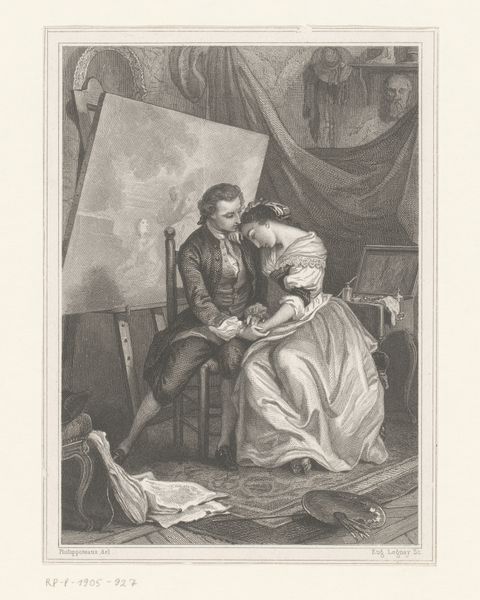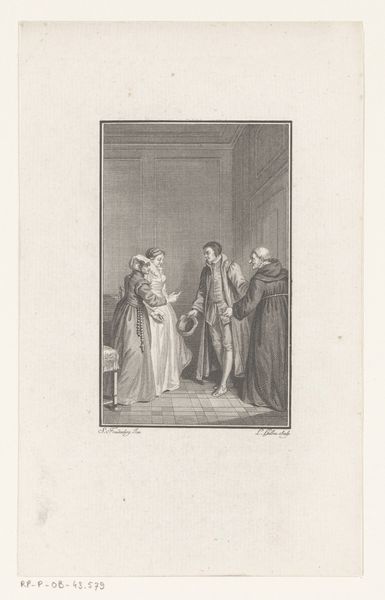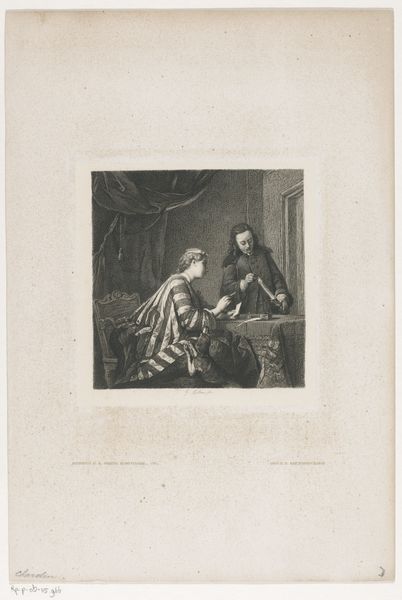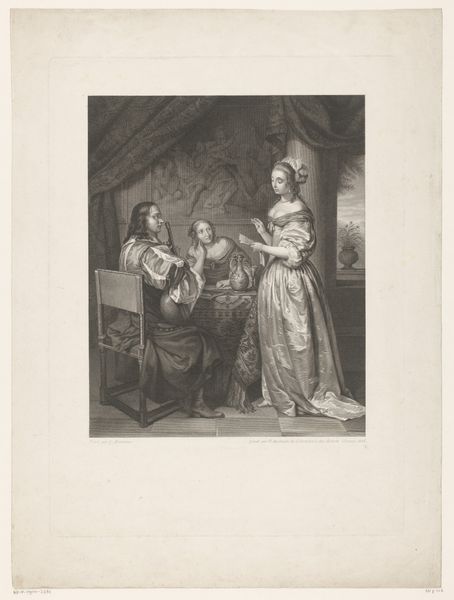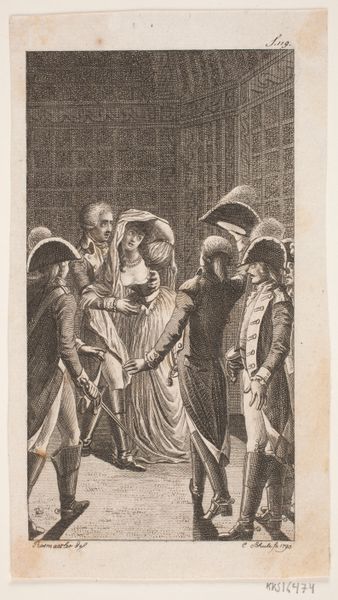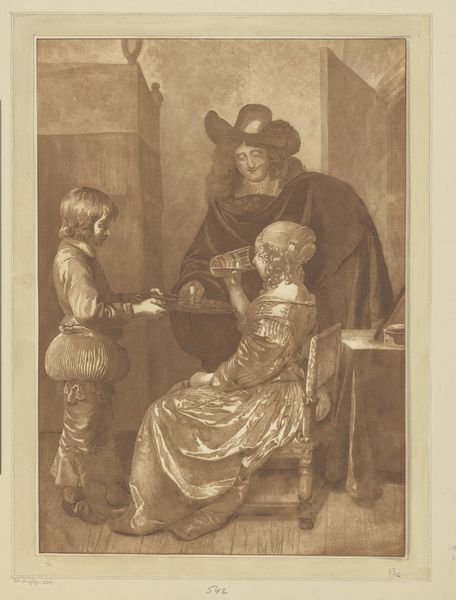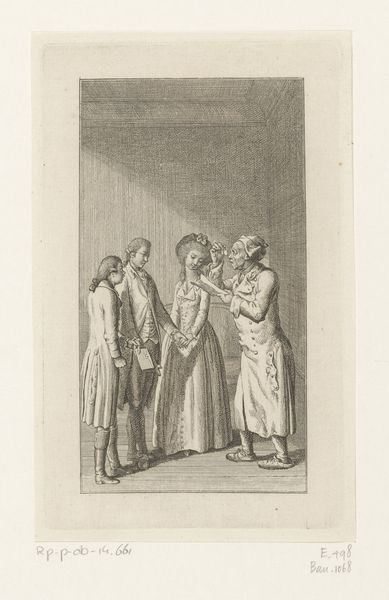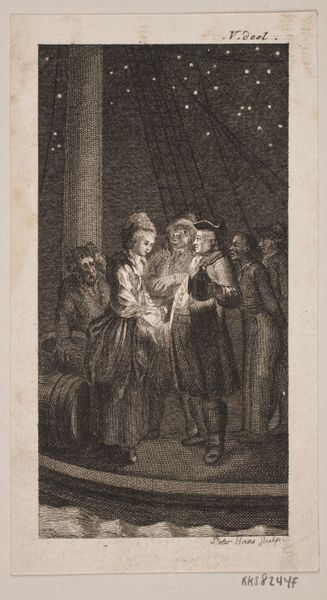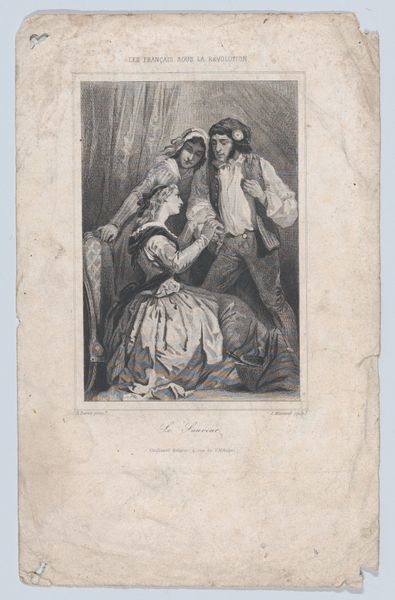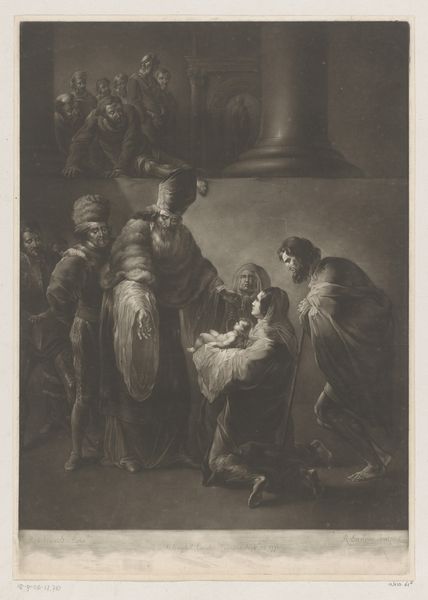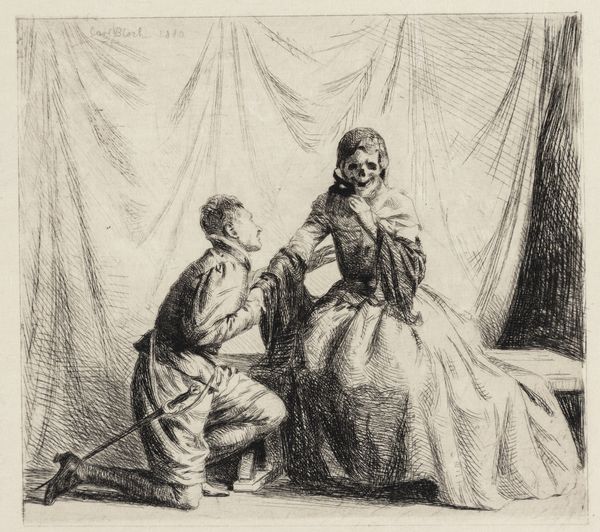
Mary, Queen of Scots at the execution block (from "The History of England") 1795
0:00
0:00
drawing, print, etching, engraving
#
portrait
#
drawing
#
medieval
#
water colours
#
narrative-art
# print
#
etching
#
history-painting
#
engraving
Dimensions: Sheet: 16 5/16 × 10 3/16 in. (41.4 × 25.8 cm)
Copyright: Public Domain
This print, made by David Hume in 18th-century England, depicts the execution of Mary, Queen of Scots. Hume’s image taps into a long history of Anglo-Scottish conflict and religious division. The visual drama emphasizes Mary's victimhood and her calm acceptance of death. The figures surrounding her display grief, reinforcing the idea of her unjust execution. Hume was working at a time when history was being rewritten to serve political ends. Prints like these played a crucial role, shaping public opinion and reinforcing national narratives. This image presents Mary as a martyr, appealing to those who saw her execution as a religiously motivated act of political violence. As historians, we examine these images by considering the political context in which they were made and distributed. By consulting historical documents and analyzing the print's visual rhetoric, we can better understand how it contributed to the ongoing debates surrounding Mary's legacy and the complex relationship between England and Scotland.
Comments
No comments
Be the first to comment and join the conversation on the ultimate creative platform.

